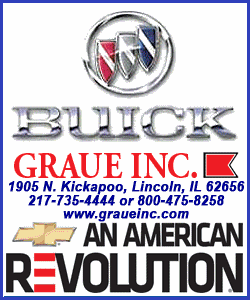 After years of being almost impossible to read, the names of those
veterans will now be known to all who visit their final resting
places. After years of being almost impossible to read, the names of those
veterans will now be known to all who visit their final resting
places.
The restoration is due to the efforts of Helen Wildermuth from
Stonehugger Cemetery Restoration Inc., Mark Davis from Stone Saver
Cemetery Restoration and half a dozen workers who are making at
least 65 markers and stones look like they did 100 years ago.
Old Union Cemetery, established in 1836, has the same problems
many old cemeteries have. The huge trees that were mere saplings a
century ago might be nice for shade, but they don't allow enough
light to reach the gravesites, and thus the stones pick up mildew
and mold as the sun doesn't bleach the stones.
The ground has also shifted. Then the stones get twisted or
settle crooked in the earth, or they fall over from roots of the
trees that hold dominion over the gravesites.

Many of the people buried here probably have no relatives in the
area, said Mark. The nearest relative might be in Oregon. Or people
might not even know they have an ancestor buried here, and thus
there is no family to take care of the markers and monuments.
Larry Howen, a member of the cemetery board, said the board set
aside some funds from the annual budget to do as many stones as
possible, and they hope to be able to have the restorers back for
several years. Howen estimates there might be as many as 600 old
stones, markers and monuments that need restoration.
It is obvious even to the most untrained observer which stones
have been restored. The contrast is remarkable. Looking at a row of
cleaned and repositioned stones for GAR members, the repair is
startling.
Both Helen and Mark are Civil War enthusiasts, and it shows in
their work and their spirits as they clean, re-mortar, reposition
and buff the markers. The team did some 13-plus stones for free as
their way of paying respect to our veterans. Both Mark and Helen
estimated they do 200-300 free veterans' stones a year. All vets
also get new flags.
With the veterans' stones now decipherable, many interesting
things are shown. In the small plot of a dozen veterans of the GAR,
there is one African-American soldier buried with the group. Many
other members of his race are buried back deep in the cemetery.
There is also an army nurse and a cavalry veterinarian. And for some
reason a veteran of the Mexican War is at rest with these fellow
soldiers. The stones restored also tell of the immigration into our
county, with GAR members who were from New York, California and
other states as well as a few Confederate soldiers. There are also
several Hebrew-inscribed stones in the section the team was working
in.
Mark explained that the process of restoring a marker is as
respectful to the stone as possible. Using high-speed nylon brushes
with water to cleanse but not deteriorate the stone, the old stains
seem to disappear and the words of those buried become readable
again.
The stones for GAR members are military-issue marble. Mark said
that names on marble usually last for about 500 years before they
become too worn to read. Granite is different and the names can last
almost forever.
[to top of second column] |

Helen has been in the business for nine years and says she has
been working with Mark as a subcontactor for almost the entire time.
"There is so much work and it's better to have two of us," she
explained.
Helen always was fascinated with genealogy, which led her on
frequent visits to cemeteries. She saw the need for restoration and
began taking workshops on working with stone.
Mark was a salesman selling supplies to printer companies and did
stone restoration part time until he realized there was more work in
cemetery restoration than there was in selling printing company
supplies.
The two both admit their jobs are a "nomadic" lifestyle. Mark
estimated they are on the road 240 days a year.
"We are like a traveling circus," Helen laughed.
They try to stay within a five- to six-hour drive from their
homes in Indiana. That still gives them plenty of work, and they
have traveled to cemeteries in Indiana, Ohio, Illinois, Iowa,
Kentucky, Michigan and even Colorado.
The job can be hot and dirty, but Helen says that when they see a
stone restored, it's worth it.
Helen takes pictures of each stone before and after restoration,
keeps one copy of the album for herself and turns the other over to
the cemetery committee who hired her company.

Estimates by Mark put the number of restored cemetery stones at
about 2,200 a year, but there is no fear that work will end anytime
soon. Word of mouth as well as cemeteries wanting the team back has
them with a full year's work booked and some jobs for 2012 and 2013
already scheduled.
Howen said that the cemetery board hopes to have the group back
for several more years.
"They are really good, and you can tell they really care about
what they are doing," he said.
And it shows in every stone restored.
More information on the restorers can be found at
http://www.stonehugger.com/
and
http://stonesavercemeteryrestoration.net/.
[By
MIKE FAK]

 |